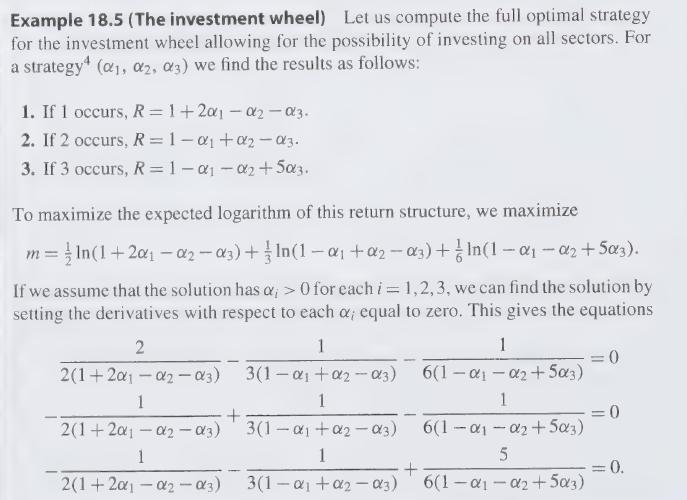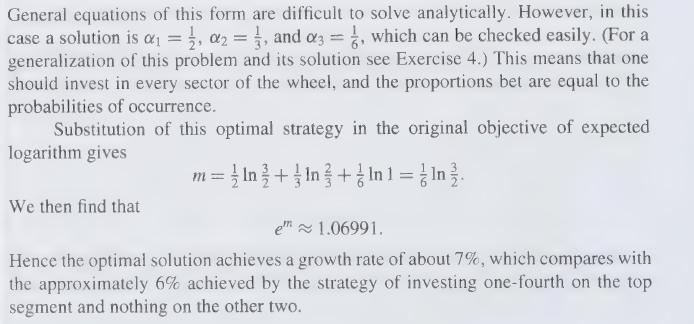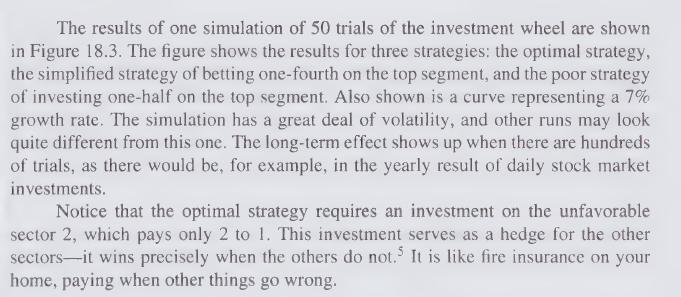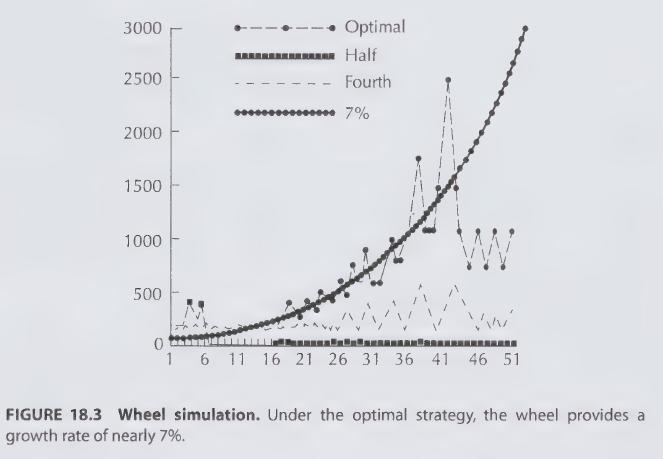Consider a wheel with (n) sectors. If the wheel pointer lands on sector (i), the payoff obtained
Question:
Consider a wheel with \(n\) sectors. If the wheel pointer lands on sector \(i\), the payoff obtained is \(r_{i}\) for every unit bet on that sector. The chance of landing on sector \(i\) is \(p_{i}, i=1,2, \ldots, n\). Let \(\alpha_{i}\) be the fraction of one's capital bet on sector \(i\). We require \(\sum_{i=1}^{n} \alpha_{i} \leq 1\) and \(\alpha_{i} \geq 0\) for \(i=1,2, \ldots, n\).
(a) Show that the optimal growth strategy is obtained by solving
\[\max \sum_{j=1}^{n} p_{j} \ln \left(r_{j} \alpha_{j}+1-\sum_{i=1}^{n} \alpha_{i}\right)\]
(b) Assuming that \(\alpha_{i}>0\) for all \(i=1,2, \ldots, n\), show that the optimal values must satisfy
\[\frac{p_{k} r_{k}}{r_{k} \alpha_{k}+1-\sum_{i=1}^{n} \alpha_{i}}-\sum_{j=1}^{n} \frac{p_{j}}{r_{j} \alpha_{j}+1-\sum_{i=1}^{n} \alpha_{i}}=0\]
for all \(k=1,2, \ldots, n\).
(c) Assume that \(\sum_{i=1}^{n} 1 / r_{i}=1\). Show that in this case a solution is \(\alpha_{i}=p_{j}\) for \(i=\) \(1,2, \ldots, n\).
(d) For the wheel given in Example 18.5, find the optimal solution and determine the corresponding optimal growth rate.
Example




Step by Step Answer:






